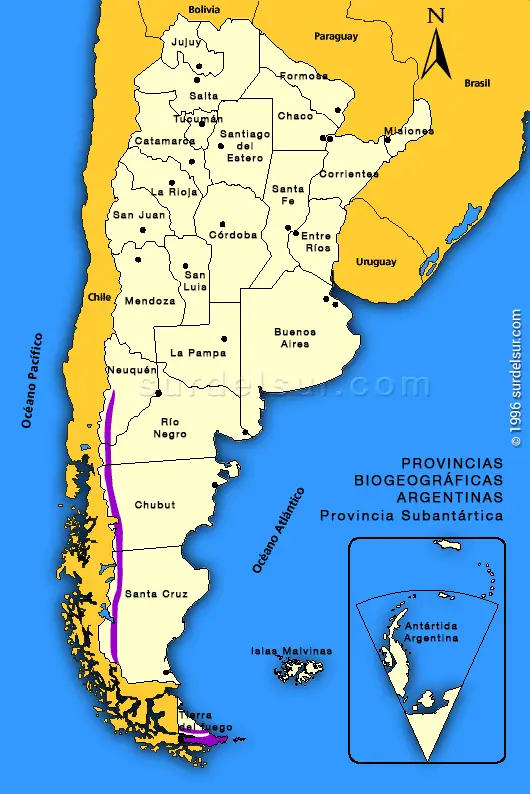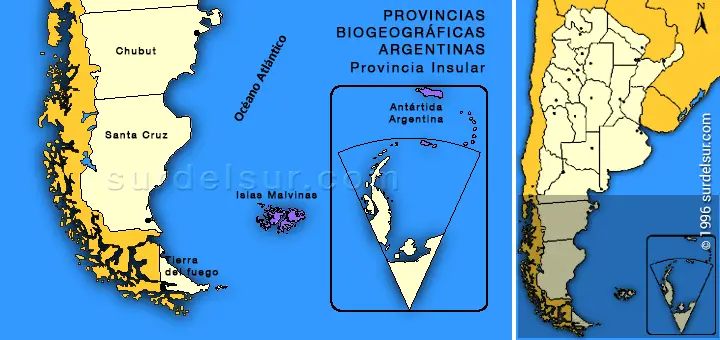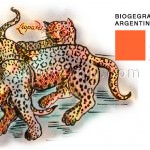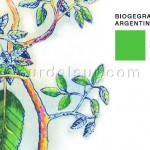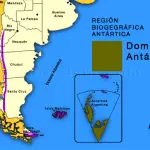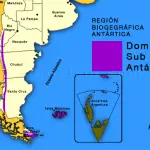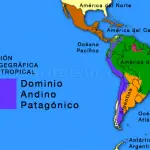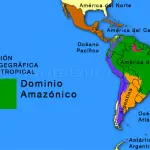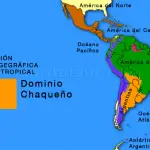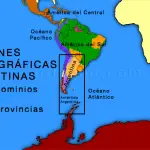The Subantarctic Domain is a narrow band spreading along both sides of the Andes, approximately from 35th parallel up to 38th parallel. From there on, it encompasses the whole of the Chilean territory and the Atlantic branch of the Andes up to the Strait of Magellan, Tierra del Fuego and the Atlantic and Pacific islands.

Article of the guest columnist, Esteban O. Lavilla y Juan A. González for surdelsur.com
It has been divided into three Provinces, two of which are represented in Argentina.
See all reports about Biogeography of Argentina >>
Argentine Sub-Antarctic Domain
The Sub-Antarctic Domain is part of the Antarctic Biogeographical Region, along with the Antarctic Domain.
The Sub-Antarctic Domain has two Provinces:
Sub-antarctic Province
The Sub-antarctic Province belongs to the Subantarctic Domain of Argentina. It occupies a narrow band to the west of the country, between Neuquén and Tierra del Fuego.
Climate
Humid, milder to the north and colder to the south. It hails all year round and it snows in winter.
Landscape
This is a mountainous region, with valleys and lakes.
The soils are rocky, with a superficial very fertile layer.
Vegetation
There are both caducous and perennial forests.
Communities
Four districts have been identified, with several climax communities.
Pehuén District: Located in the west of Neuquén, it is compounded by pure pehuén forests, o by groups of these trees separated by gramineous steppe.
Caducous Forest District: From the south of Neuquén up to Tierra del Fuego. The caducous trees prevail, such as ñire, lenga, rauli and pellín oak, although there are also perennial trees such as cypress, and canas, rushes, etc.
Valdivia District: In Argentina it covers a small discontinuous surface in Neuquén, Río Negro and Chubut. It is an extremely humid area, characterized by the presence of coihue, urmo, alerces and arrayanes.
In Argentina it covers discontinuous areas in Santa Cruz and Tierra del Fuego. The prevailing trees are perennial, such as guindo, canelo and mayten. The peat bogs are also typical of this district.
Magellan District: In Argentina it covers discontinuous areas in Santa Cruz and Tierra del Fuego. The prevailing trees are perennial, such as guindo, canelo and mayten. The peat bogs are also typical of this district.
Fauna
It is easily characterized due to the high level of endemic species. Many of its components present different degrees of menace.
Mammals: Huemul, pudu, puma, huiña cat, red fox, Patagonian skunk, small ferret, huillín, various types of bats and rodents, woodland monkey, chunchungo, etc. Various types of cervids have been introduced.
Birds: Steam duck, cauquén, agachona, Fueguino parakeet, carpintero gigante, black necked swan, gallareta, huala, diving duck, condor, jote, ruby humming bird, chucao, rayadito, picolezna, fío-fío, diucón, Patagonian thrush, Araucanian pigeon, tero, southern oyster catcher, etc.
Reptiles: Various types of lizards
Amphibians: Various types of endemic groups (reside only in this region); see the glossary of zoological terms.
Fish: Criollo perch, wide mouthed perch, peladillas, velvet catfish, big puyén, small epuyén, Patagonian silversmelt, etc. Trout and salmon have been introduced.
Human Activities
Wood development, small industrial nucleuses, within limited areas.
Insular Province
The Insular Province is part of Subantarctic Domain of Argentina. It includes the Malvinas Islands, Southern Georgia’s Islands and other minor Sub-Antarctic islands.
Climate
Humid and cold, with frequent snowfalls.
Landscape
This is a region of low mountains.
Vegetation
There are no trees.
Communities
Several communities have been identified, where the prevailing species are from the grass family with underbrushes as high as 2 m (78 inches) and plants forming plates and cushions.
Fauna
Similar to that of the Sub-Antarctic province, although very much impoverished and with some endemic species; the oceanic birds are prevailing. No amphibians have been reported.
Human Activities
Extensive raising of sheep.

